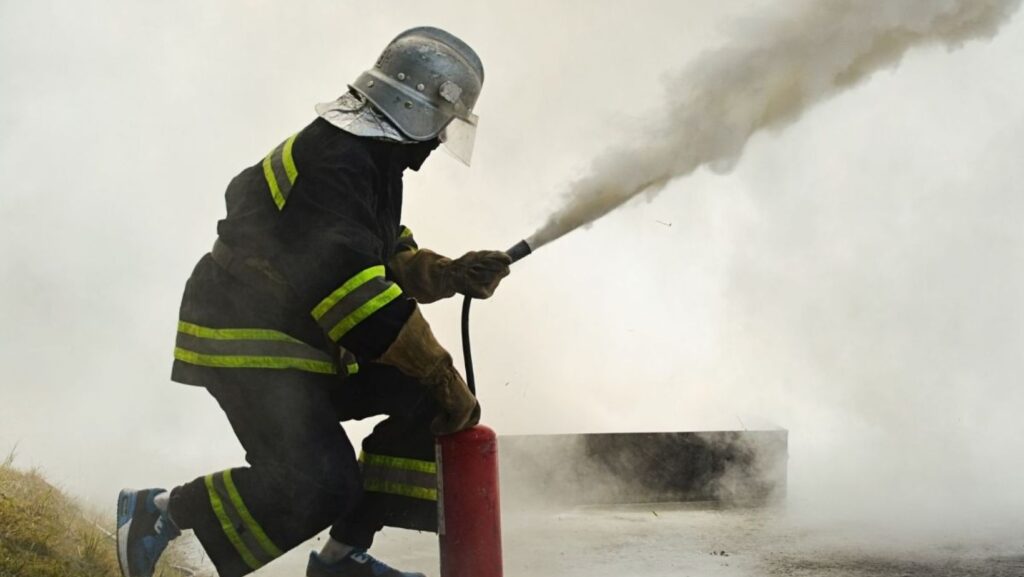
Aqueous Film Forming Foam (AFFF) has long been a critical tool in firefighting, particularly for tackling challenging fuel-based fires. However, its effectiveness comes with a hidden cost.
Recent studies have unveiled significant health risks associated with AFFF, primarily due to its composition, which includes harmful chemicals like PFAS (Per- and Polyfluoroalkyl Substances). These revelations have opened the door to potential legal action for those exposed.
Individuals seeking to understand the implications of AFFF exposure and their rights should learn more about how this issue unfolds and what steps can be taken by speaking with a lawyer. This emerging concern highlights health risks and underscores the importance of informed legal guidance in such complex scenarios.
What is AFFF?
Aqueous Film Forming Foam (AFFF) is a firefighting agent primarily used for extinguishing fuel fires, particularly in scenarios involving highly flammable liquids like oil and gasoline. Its effectiveness lies in its unique ability to create a barrier between the fuel and the air, effectively cutting off the oxygen supply and suppressing the fire.
AFFF achieves this through a combination of water, foam concentrate, and surfactants, producing a thin, aqueous film together. This film quickly spreads over the surface of the flammable liquid, providing rapid-fire knockdown and preventing re-ignition.
However, the key components that make AFFF so effective are also a concern; many AFFF formulations contain per- and polyfluoroalkyl substances (PFAS), chemicals linked to various health risks. The use of AFFF, particularly in military and industrial settings, has thus become a topic of environmental and health scrutiny.
Health Risks of AFFF
The health risks associated with Aqueous Film Forming Foam (AFFF) are primarily linked to its per- and polyfluoroalkyl (PFAS) content. PFAS are a group of manufactured chemicals used in various industrial applications and consumer products for their resistance to heat, water, and oil.
However, these chemicals persist in the environment and the human body – meaning they don’t break down and can accumulate over time.
Exposure to PFAS has been associated with several health issues. The most concerning of these is an increased risk of certain types of cancer, including kidney and testicular cancer. Studies have also linked PFAS exposure to other health problems, such as thyroid hormone disruption, elevated cholesterol levels, and immune system impairments. In pregnant women, PFAS exposure has been associated with decreased birth weights and potential developmental delays in children.
The health risks are particularly significant for firefighters and individuals in military or industrial occupations who have historically been in frequent contact with AFFF. However, the contamination of water supplies near areas where AFFF has been heavily used also poses risks to the broader community.

The persistence and bioaccumulation of PFAS in the environment and the human body make AFFF a longstanding health concern. This leads to increased scrutiny and calls for stricter regulations and remediation efforts.
Legal Landscape: AFFF Exposure Cases and Settlements
The legal landscape surrounding Aqueous Film Forming Foam (AFFF) has been dynamic, with numerous cases and significant settlements drawing attention to the severe health risks associated with its use.
Notable Legal Cases and Settlements
● Firefighter Class-Action Lawsuits: Firefighters across the nation have filed class-action lawsuits, citing cancer diagnoses linked to PFAS exposure from AFFF.
● Military and Industrial Exposure Claims: Veterans and workers in industries that frequently use AFFF have pursued legal action for health issues related to PFAS.
● Community Water Contamination Cases: In areas where AFFF usage has contaminated local water supplies, residents have filed lawsuits against manufacturers for environmental and health damages.
● Major Manufacturer Settlements: Some of the largest chemical companies have faced substantial settlements, often amounting to hundreds of millions of dollars, for producing and distributing PFAS-containing AFFF.
Criteria for a Valid Legal Case Against AFFF Exposure
● Documented Exposure to AFFF: Evidence of direct or significant indirect exposure to AFFF, particularly in occupational settings.
● Health Issues Linked to PFAS: Medical documentation connecting specific health problems, like certain cancers, to PFAS exposure from AFFF.
● Manufacturer Responsibility: Proof that AFFF manufacturers were aware of the risks associated with PFAS but failed to warn users or take necessary precautions.
● Adherence to Statute of Limitations: Ensuring that legal action is taken within the time frame allowed by law, which varies depending on the jurisdiction and the case’s specifics.
These elements are critical for anyone considering a lawsuit due to AFFF exposure. The ongoing developments in AFFF-related litigation highlight the importance of timely and informed legal action.
Next Steps for Potential AFFF Exposure Victims
If you believe you’ve been exposed to Aqueous Film Forming Foam (AFFF) and are concerned about the associated health risks, you should take several necessary steps to protect your health and legal rights.
Seek Medical Attention
Comprehensive Health Check-Up: Schedule a thorough medical examination, mentioning your concerns about AFFF exposure.

Regular Monitoring: If you’re at risk, regular health screenings for conditions linked to PFAS exposure, such as certain types of cancer, are crucial.
Documenting Your Exposure
● Detailed Exposure History: Record all potential instances of AFFF exposure, including dates, locations, and duration.
● Employment Records: If exposure occurred during employment, maintain detailed work records and any safety reports or incidents involving AFFF.
● Witness Statements: Collect statements from colleagues or others who can corroborate your exposure.
Legal Consultation
● Find a Specialized Attorney: Get in touch with the ConsumerShield team specializing in environmental law or toxic tort cases, particularly those with experience in AFFF-related litigation.
● Initial Consultation: Discuss your case with the attorney, providing all relevant medical and exposure documentation.
● Understand Your Rights: Learn about your legal rights and options, including the possibility of joining a class-action lawsuit or filing an individual claim.
Stay Informed
● Research and Resources: Stay up-to-date with the latest research on AFFF and PFAS health impacts and ongoing legal cases and settlements.
● Support Groups: Consider joining support groups for individuals affected by AFFF exposure, which can provide additional information and emotional support.
Taking these steps can help safeguard your health and build a strong foundation for any potential legal action related to AFFF exposure. Remember, early action and thorough documentation are vital in addressing the consequences of exposure to harmful substances like AFFF.
Conclusion
The risks associated with Aqueous Film Forming Foam (AFFF) are significant, mainly due to its PFAS content and the associated health hazards. If you suspect you’ve been exposed to AFFF, taking proactive steps to monitor your health and document your exposure is crucial.
Moreover, exploring legal options is vital for seeking justice and compensation. Affected individuals are encouraged to consult specialized attorneys to understand their rights and the potential for legal recourse in this evolving area of environmental and health law.












